Click on images to enlarge
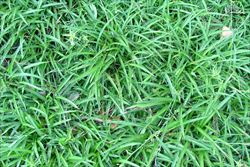
habit (Photo: Sheldon Navie)
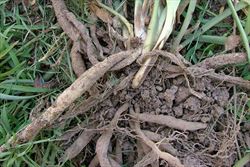
tuberous roots (Photo: Sheldon Navie)

leaves (Photo: Sheldon Navie)
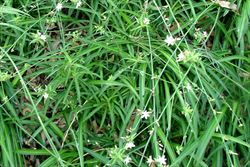
elongated flowering stems (Photo: Sheldon Navie)
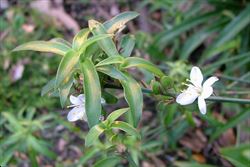
plantlets, flowers and immature fruit (Photo: Sheldon Navie)
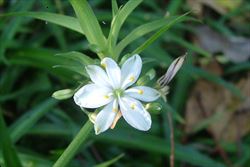
close-up of flower (Photo: Sheldon Navie)
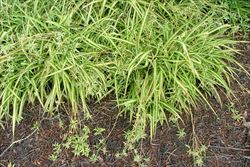
garden planting of Chlorophytum comosum 'Vittatum' (Photo: Sheldon Navie)
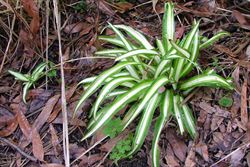
habit of Chlorophytum comosum 'Vittatum' (Photo: Sheldon Navie)
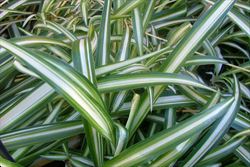
variegated leaves of Chlorophytum comosum 'Vittatum' (Photo: Sheldon Navie)

close-up of the leaves of Chlorophytum comosum 'Vittatum' (Photo: Sheldon Navie)

fruit of Chlorophytum comosum 'Vittatum' (Photo: Sheldon Navie)
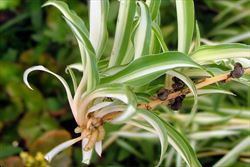
plantlets, adventitious roots and old fruit of Chlorophytum comosum 'Vittatum' (Photo: Sheldon Navie)
Scientific Name
Chlorophytum comosum (Thunb.) Jacques
Family
Anthericaceae
Common Names
bracket plant, ribbon plant, ribbonplant, spider ivy, spider lily, spider plant, spider-ivy
Origin
Native to sub-Saharan Africa (i.e. Ethiopia, Kenya, Tanzania, Uganda, Cameroon, Equatorial Guinea, Zaire, Ivory Coast, Liberia, Nigeria, Sierra Leone, Malawi, Mozambique, Zambia, Zimbabwe, South Africa and Swaziland).
Naturalised Distribution
Naturalised in south-eastern Queensland, in the coastal districts of central New South Wales, in central Victoria and in south-western Western Australia.
Also naturalised on Lord Howe Island and in south-eastern USA (i.e. Alabama and Florida).
Notes
Spider plant (Chlorophytum comosum) is regarded as a minor environmental weed in New South Wales, Queensland and Victoria. Plants become established in native habitats when they are introduced to the area in discarded garden refuse. Once established they spread by plantlets and individual clumps can spread quite extensively, excluding native plants in the ground layer of natural vegetation.
This species is mainly a problem in urban bushland and coastal sites near Brisbane and Sydney. In the Sydney area, spider plant (Chlorophytum comosum) is also found in grassy woodlands and sandstone vegetation. In Western Australia, it has been recorded spreading into burnt and disturbed karri-marri forest and along highly disturbed creeklines.
A cultivar with variegated leaves (i.e. Chlorophytum comosum 'Vittatum') is very common among cultivated and naturalised populations.

